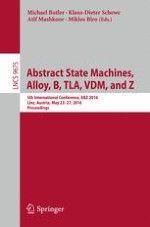
2016 | OriginalPaper | Buchkapitel
Modeling Distributed Algorithms by Abstract State Machines Compared to Petri Nets
verfasst von : Egon Börger
Erschienen in: Abstract State Machines, Alloy, B, TLA, VDM, and Z
Aktivieren Sie unsere intelligente Suche, um passende Fachinhalte oder Patente zu finden.
Wählen Sie Textabschnitte aus um mit Künstlicher Intelligenz passenden Patente zu finden. powered by
Markieren Sie Textabschnitte, um KI-gestützt weitere passende Inhalte zu finden. powered by